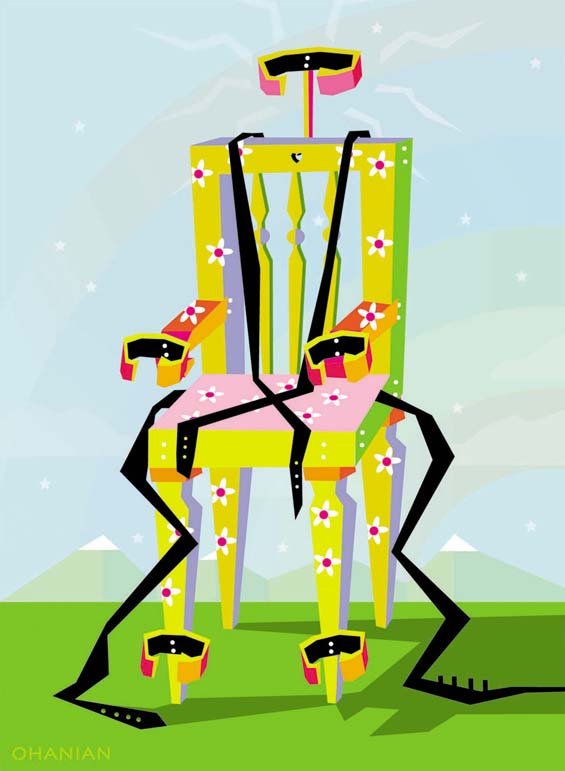
Within hours of Barr's announcement, Representative Ayanna Pressley introduced a bill to abolish capital punishment for federal crimes. The American Civil Liberties Union said it would challenge the new policy in court. And more than a dozen Democratic presidential candidates condemned the Trump administration and the death penalty. Among them was former Vice President Joe Biden, a longtime supporter of executing murderers who had switched his position just two days earlier.
The Justice Department has scheduled five men to be executed in December and January. Alfred Bourgeois, Dustin Honken, Daniel Lee, Lezmond Mitchell, and Wesley Purkey were all convicted of unspeakably cruel and depraved murders. Their victims ranged in age from 2 to 80, and most were tortured and terrorized before they were killed. There is no question about the guilt of these killers, nor any claim that they have been denied scrupulous due process of law.
Those who deplore Barr's decision make no attempt to argue that these men deserve to live. Instead, they denounced capital punishment itself, and accuse the administration of changing its policy out of "raw political calculus" (Slate) and as "one more stunt to distract Americans" (The Atlantic).
Of course politics were involved in Barr's move. But in carrying out the executions, the federal government will also be doing justice and upholding the rule of law. It wasn't the Trump Administration that convicted and sentenced these killers. It was independent judges and jurors who saw the evidence, observed the witnesses, heard the lawyers, and then concluded — unanimously — not only that the defendants were guilty of capital murder, but that death was the proper punishment.
If anyone is being political, it is Democrats like Biden, who favored the death penalty when it had widespread public support, and didn't turn against it until it became unpopular among Democrats. As chairman of the Senate Judiciary Committee in the 1990s, Biden championed a crime bill that created 60 new death penalty offenses. "We do everything but hang people for jaywalking in this bill," he proudly declared at the time. That measure passed by sweeping majorities in the Democratic-controlled House and Senate, and was signed into law by a Democratic president, Bill Clinton.
What has changed since the Clinton era? Why has there been such a marked decline in the share of Americans who say that they support the death penalty for murderers? Death-penalty abolitionists credit themselves with making better, stronger, or more effective arguments. Here's a more likely explanation: Public opinion shifted because of murder rates, not policy debates.
In the 1990s, when Americans approved the death penalty by sky-high percentages, Americans were also being killed with sky-high frequency. There were fewer than 10,000 homicides annually in the United States in the early 1960s, but three decades later there were more than 24,000. The nation's murder rate soared over the same period from 5 per 100,000 to 9.5 per 100,000.
It was against that background that support for capital punishment, which had been falling since the 1950s, began to climb. In 1966, Gallup found that only 42 percent of the public favored executing murderers: an all-time low. In 1994, the year Clinton signed that crime bill, pro-death-penalty sentiment had risen to 80 percent: an all-time high.
 When murder rates go up, support for the death penalty goes up, too. When murder rates fall, support for the death penalty drops. |
And just as Americans embraced the death penalty when killings were on the rise, they backed away from it as killings decreased.
After hitting 9.5 in 1994, the murder rate began a downward plunge that criminologists are still trying to understand. It sank all the way to 4.4 in 2014 — and as it did, so did public approval of the death penalty. According to the Pew Research Center, the fraction of Americans supporting capital punishment dropped to 49 percent in 2016, the lowest level in four decades.
And since then? In 2014, the pendulum shifted again. Murders and the murder rate began moving back up. Sure enough, support for the death penalty did too. It rose to 54 percent in 2018.
To be sure, correlation doesn't prove causation. But six decades of correlation are hard to discount: The willingness of the public to put murderers to death rises and falls with the threat murderers pose. If homicides are back on an upward trend, more and more Americans will want killers put to death — and more and more politicians will decide they do, too.
Sign up for the daily JWR update. It's free. Just click here.
(COMMENT, BELOW)


 Contact The Editor
Contact The Editor
 Articles By This Author
Articles By This Author